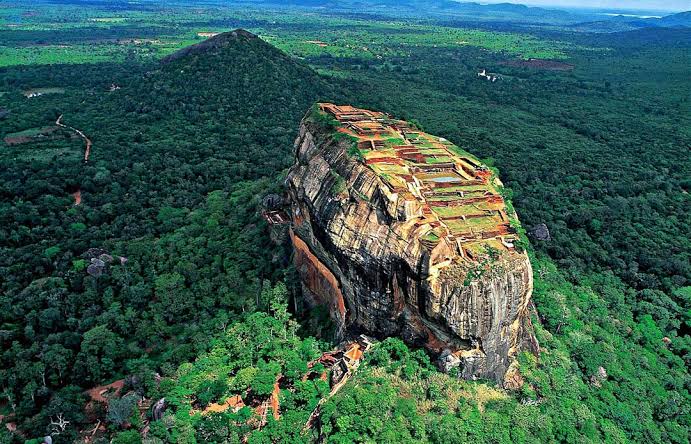Travel
Sigiriya, an Ancient Fortress in Sri Lanka
- Sigiriya or Lion’s rock, is one of the most valuable historical monument and iconic attractions in Sri Lanka.
- In 1982, UNESCO declared it a World Heritage Site.
- The ancient fortress, which is situated on top of a 180-meter-high plateau, is considered by the locals as the Eight Wonder of the world.
Sigiriya, from the word Sihagri which literally means ‘Lion Rock,’ is considered one of the most beautiful places on earth because of its magnificent gardens and frescoes.
This ancient rock fortress is situated in the northern Matale district in Sri Lanka, between the towns of Dambulla and Habarane. It sits above a massive rocky plateau formed from hardened magma of an extinct volcano, approximately two billion years ago.
Sigiriya’s summit is 180 meters above the jungles surrounding it, and is 349 meters above sea level.

The fortress consists of remnants of an ancient stronghold with vast gardens, fountains, ponds, alleys, and canals around it.

This citadel rock is also one of the oldest landscaped gardens in the world.

The main entrance, which was constructed in the form of a huge lion, is located in northern side of the rock.

Its massive paws remain intact although the rest of its upper body eroded in time.

Sigiriya served as a Buddhist monastery during third century BC. In the late 5th century, the Sinhalese king Kasyapa I ordered to build the lion-shaped palace there to protect himself from his enemies. Its elevated position allowed the king a complete 360-degree view of the area. The king also moved the capital from Anuradhapura to Sigiriya.
However, when Mogallana defeated King Kasyapa I in 495 AD, the monks returned to the palace. The fortress was abandoned in 1155, and was only rediscovered in 1828.
Magnificent frescoes cover most of Sigiriya’s western wall.

These were painted during the king’s reign, and the nude women are believed to be representations of either his wives, concubines, or priestesses.

18 frescoes remain to this day.

The Mirror wall is also one of its most striking features. During the king’s reign, it was polished so thoroughly that he could see his reflection on it.

Visitors of the fortress painted inscriptions and poems on the wall. The oldest dated back to the 8th century.

Also in the western part of the citadel are water gardens and terraced gardens…

As well as cave and boulder gardens, which are a series of natural rock formations.

It was built with a complex hydraulic system composed of canals, locks, lakes, dams, bridges, fountains, and water pumps. These fountains are probably the oldest in the world.

Water from these channels flow through the entire Sigiriya area, especially when they are filled up during rainy season.

This magnificent place is recognized as one of the best examples of ancient urban planning. In 1982, UNESCO declared Sigiriya as a World Heritage Site.

-

 OMG8 years ago
OMG8 years agoMan Iced Neighbor Who Repeatedly Asked Him “When Are You Getting Married?”
-

 Interesting8 years ago
Interesting8 years agoPork Fat Is Officially One of the World’s Most Nutritious Foods
-

 News7 years ago
News7 years agoThailand Police Lay Down Their Weapons, Join Protesters To Fight The Power
-

 Interesting8 years ago
Interesting8 years agoScreen Dependency Disorder Can Damage Your Child’s Brain, Psychologist Warns























